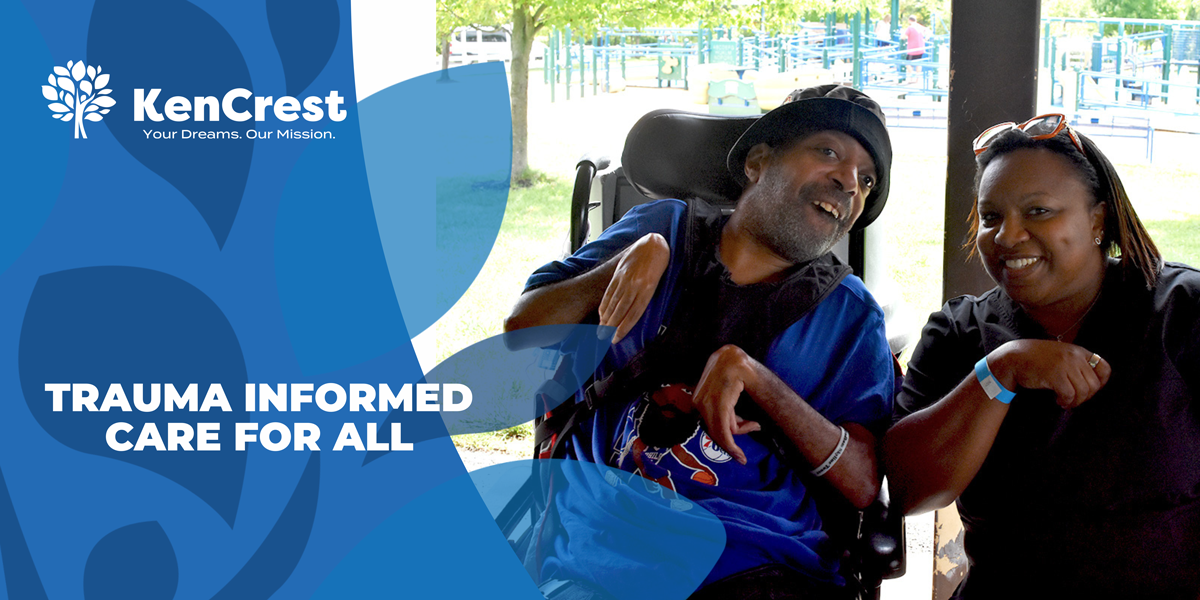Trauma-Informed Care for All

What is trauma-informed care, and how can the human service industry promote a trauma-responsive workforce?
By Dr. Autumn Dae Miller
In the human service industry, many people we support have survived traumatic experiences that, according to the Substance Abuse and Mental Health Services Administration, result in physical, emotional, and/or life-threatening harm. In fact, according to the National Council for Behavioral Health, over 70 percent of adults (over 223 million people) in the United States experience trauma. As the industry has become aware of the impact of trauma, many organizations are seeing the value of trauma-informed care.
Transitioning to trauma-informed practices is necessary and part of creating positive change; however, it is only the beginning. Some general concepts of trauma-informed care include:
- Empowerment—a strengths-based approach
- Choice—giving control to the individual
- Collaboration—support team members working together
- Safety—creation of a physically and emotionally safe environment
- Trustworthiness—communicating clear expectations, roles and following through on promises (Harris & Fallot, 2006).
“Trauma-informed care acknowledges the need to understand a patient’s life experiences to deliver effective care and has the potential to improve patient engagement, treatment adherence, health outcomes, and provider and staff wellness,” writes Christopher Menschner and Alexandra Maul from the Center for Health Care Strategies.
Trauma-informed care isn’t just about focusing on the needs of a client. Organizations need to include client care and organizational components to become a trauma-informed care agency. This must include agencies valuing empathy over compliance. Focusing on empathy does not mean compliance stops. When a trauma-informed mindset shift happens, compliance and quality-of-life outcome rates naturally rise (Beck et al., 2022; Fernandez et al., 2023).

For example, imagine an intellectually disabled client who refused to shower for three days. Staff try offering options at all different times of day, but the client is not interested in showering and gets frustrated. He begins throwing couch cushions and pillows at the staff if they continue to push the issue.
In these scenarios, staff stress typically rises and behaviorists get brought in when everyone is exhausted.
Now, imagine a trauma-informed and trauma-responsive workforce. The first night the client refuses to shower, the staff member can say, “hey, I completely honor your right to choose how and when you take care of your body.” They recognize that something deeper may have happened to the client, so they use their trauma-informed tools to recognize how the client may feel.

The staff goes on to ask simple questions about what the two of them can do together so that the client feels grounded and safe, heard and seen by the staff. Later that evening, the client willingly shows the staff member a bruise and communicates that it happened with their family a couple of days ago. Using those trauma-informed tools, the staff member was able to prioritize that client which made them feel safe enough to come forward with an issue. They can then file a report in a calm setting, using empathy over compliance.
In a trauma-informed agency, the story does not end there. The staff member receives regular supervision and check-ins to discuss what happened and how to receive a session with a therapist or counselor to process the experience as needed. The supervisor regularly checks in to see if the staff or clients need anything, which minimizes the effects of potential vicarious trauma (trauma experienced by those witnessing or hearing about traumatic events of others) and increases staff retention.

Using agency-wide trauma-informed practices within a trauma-responsive workforce, benefits both the people we support and our employees during any time of need.
According to CHCS.org, “building foundational awareness of trauma-informed approaches should begin early in a provider’s education and be reinforced through continuing education. … Collectively, policymakers, providers, and payers have a compelling opportunity to confront the short- and long-term impacts of trauma and pursue the opportunity that trauma-informed care presents to improve health outcomes and decrease costs.”
In the end, the benefits of trauma-informed care far outweigh the costs. We just have to apply it to everyone we serve and the people directly and indirectly supporting them.
Want to learn more about KenCrest’s Behavioral Health Supports and Services?
References:
Beck, E., Carmichael, D., Blanton, S., Bride, B., Mobley, A., & DiGirolamo, A. (2022). Toward a trauma-informed state: An exploration of a training collaborative. Traumatology, 28(4), 471-479. http://dx.doi.org/10.1037/trm0000351
Bosk, E. A., Williams-Butler, A., Ruisard, D., & MacKenzie, M. J. (2020). Frontline staff characteristics and capacity for trauma-informed care: Implicaitons for the child welfare workforce. Child Abuse & Neglect, 110(3), https://doi.org/10.1016/j.chiabu.2020.104536
Fernandez, V., Gausereide-Corral, M., Valiente, C., & Sanchez-Iglesias, I. (January 23, 2023). Effectiveness of trauma-informed care interventions at the organizational level: A systemic review. Psychological Services. http://dx.doi.org/10.1037/ser0000737
Harris, M., & Fallot, R. D. (2006). Envisioning a trauma-informed service system: A vital paradigm shift. New Directions for Student Leadership, 2001(89), 3-22. https://doi.org/10.1002/yd.23320018903
McNally, P., Irvine, M., Taggart, L., Shevlin, M., & Kessler, J. (2022). Exploring the knowledge base of trauma and trauma informed care of staff working in community residential accommodation for adults with an intellectual disability. Journal of Applied Research in Intellectual Disabilities, 35(5), 1162-1173. https://doi.org/10.1111/jar.13002
Menschner, C., & Maul, A. (2016). Issue brief: Key ingredients for successful trauma-informed care implementation. https://www.samhsa.gov/sites/default/files/programs_campaigns/childrens_mental_health/atc-whitepaper-040616.pdf
National Center for Injury Prevention and Control, Division of Violence Prevention. (April 6, 2022). Fast facts: Preventing adverse childhood experiences. Centers for Disease Control and Prevention. https://www.cdc.gov/violenceprevention/aces/fastfact.html
National Council for Behavioral Health. (08/2022). How to Manage Trauma. https://www.thenationalcouncil.org/wp-content/uploads/2022/08/Trauma-infographic.pdf
Substance Abuse and Mental Health Services Administration. (9/27/2022). Trauma and Violence. samhsa.gov/trauma-violence
